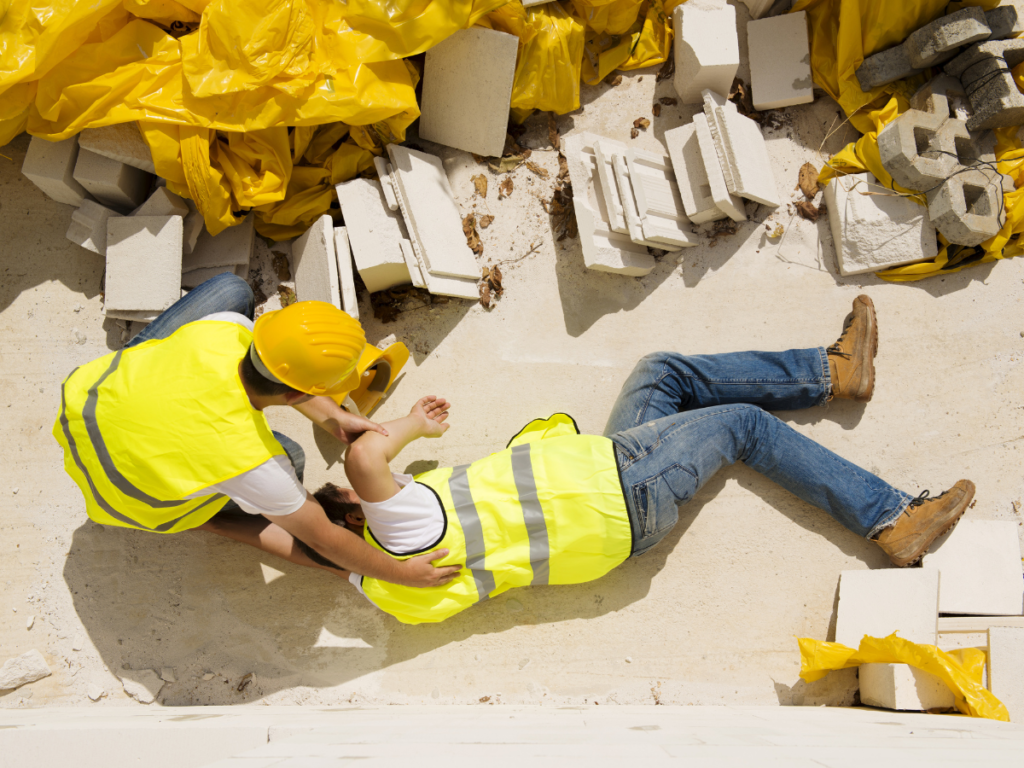
Construction sites are inherently hazardous environments, and slip-and-fall incidents are unfortunately common. These accidents often have profound consequences, including serious injuries, some of which may require surgery and an extensive recovery period. When a slip-and-fall accident occurs, it’s essential to understand the elements of negligence to hold responsible parties accountable and seek compensation for damages.
Understanding the Elements of Negligence
The tort of negligence is a legal concept that forms the basis for many personal injury claims. It refers to a failure to exercise reasonable care, resulting in harm to another person. In the context of construction site slip-and-fall accidents, negligence encompasses the idea that those responsible for maintaining a safe construction environment failed to do so, leading to injuries.
In construction site slip-and-fall accidents, these elements take on specific characteristics:
- Duty of care: Property owners, contractors, and other parties involved in construction owe a duty of care to workers and visitors. This duty includes maintaining a hazard-free environment, providing proper warnings, and complying with safety regulations.
- Breach of duty: A breach may occur if the responsible parties fail to address known hazards, provide adequate safety measures, or ensure that the site is compliant with industry standards. Examples include neglecting to clean up spills, failing to secure work areas, or not properly marking hazardous zones.
- Causation: Establishing causation involves demonstrating that the hazardous conditions or safety violations directly led to the slip-and-fall incident. This may involve showing how the breach of duty was a substantial factor in causing the accident.
- Damages: Damages in construction site slip-and-fall cases can include medical expenses for treating injuries, rehabilitation costs, lost wages due to time off work, and compensation for pain and suffering.
Establishing Liability: Identifying Responsible Parties
Determining the parties with a duty of care on the construction site, including property owners, contractors, and subcontractors, is a main factor in determining liability. Analyzing contracts and agreements helps ascertain responsibility for maintaining safe premises. Holding all potentially negligent parties accountable is essential for ensuring a comprehensive approach to duty of care.
Examining industry standards and regulations for construction site safety provides a framework for evaluating a breach of duty. Here, identifying specific safety violations that contributed to the slip-and-fall incident is key. Demonstrating how responsible parties failed to meet their duty of care is central to establishing liability.
In these types of cases, the cause of the accident must be proven. Proving causation involves establishing a direct link between the breach of duty and the slip-and-fall incident. This requires demonstrating that the safety violations or negligence directly led to the hazardous conditions that resulted in the accident. In order to establish liability, a breach in duty of care, and prove causation, your NY construction accident lawyer will want to investigate the accident and collect evidence.
Gathering and Preserving Evidence
Construction site slip-and-fall cases require substantial evidence to establish negligence and support a legal claim. Gathering relevant evidence is crucial for demonstrating that the responsible parties breached their duty of care, leading to the accident and subsequent injuries. Here are significant sources of evidence in construction site slip-and-fall cases:
- Incident reports: Construction site incident reports can provide details about slip-and-fall incidents, including location, cause, and immediate actions taken.
- Witness statements: Witness statements can be valuable evidence in slip-and-fall cases. They can help establish the conditions, causes, and responses during the incident.
- Photographs and videos: Photos and videos can show construction site conditions, hazards, accidents, and warnings.
- Maintenance and inspection records: Maintenance and inspection records of a construction site can be crucial in determining whether regular inspections were conducted, hazards were identified, and corrective actions were taken.
- Medical records: Medical records are crucial evidence for slip-and-fall cases. They establish the extent of harm and help calculate damages.
How Your NYC Construction Site Accident Attorney Can Help
Seeking legal representation is paramount to successfully prosecute an injury claim in a New York construction site slip-and-fall case. An experienced personal injury lawyer can provide invaluable assistance in gathering evidence, determining liability, and negotiating with insurance companies. They’ll use their legal knowledge and resources to help make sure that you receive fair compensation for your damages.
To ensure your attorney is able to fight for maximum compensation, you’ll want to document the extent of your injuries, including medical records and expert opinions. Your attorney will calculate your economic damages, such as medical bills and lost wages, as well as your non-economic damages, like pain and suffering, providing a comprehensive picture of the harm you’ve suffered.
We Know the Ins and Outs of Construction Site Accident Cases
If you’ve sustained serious injuries in a slip-and-fall incident on a New York City construction site, Wingate, Russotti, Shapiro, Moses & Halperin, LLP is here to help you on the road to recovery. Our New York firm is renowned for the outstanding results we get our clients, and we’re ready to fight for you. Let us help you get the justice you deserve.
Call us at (212) 986-7353 to schedule a free consultation to discuss your case.